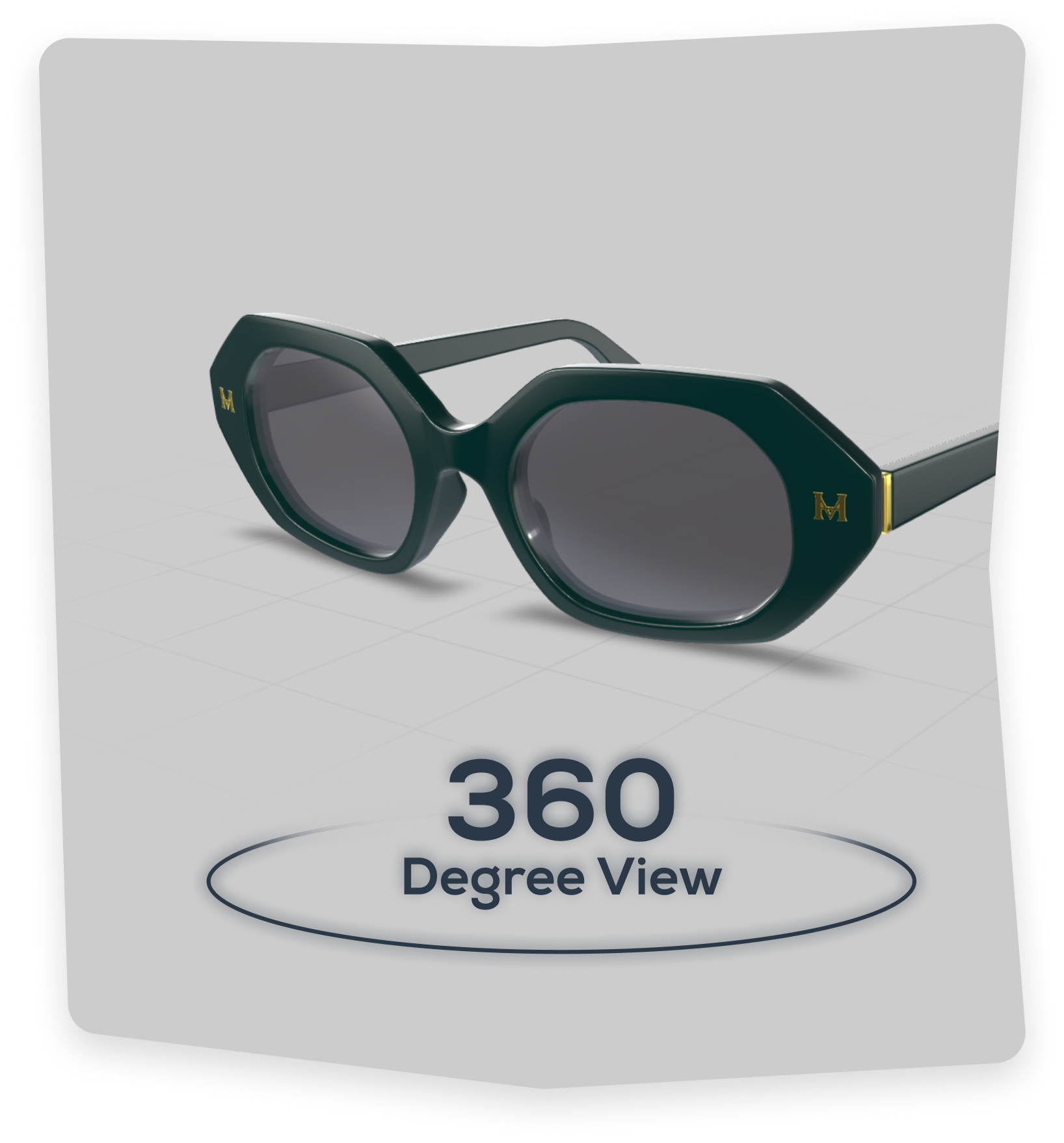In a world where e-commerce is increasingly visual and immersive, the standard static product photo just doesn’t cut it anymore. Shoppers crave detail, interactivity, and a sense of confidence before hitting that “Buy Now” button. That’s where 360 product view technology comes in—an interactive, rotating view that lets customers inspect a product from every angle, as if they were holding it in their hands.
From consumer electronics to fashion, furniture, and beauty products, 360 view products are quickly becoming a standard across leading e-commerce sites. And behind it all, there’s the rising demand for a solid, intuitive 360 view app that powers these experiences across devices.
Let’s explore what this technology really means, how it works, and why it’s changing the game for brands and customers alike.

What is a 360 product view?
A 360 product view allows customers to see an item from all sides by interacting with it—usually by dragging their cursor or finger left or right to rotate the product. Unlike a static image or even a basic slideshow, this format creates a feeling of control and realism, making digital shopping feel more like in-store browsing.
The magic happens through a series of high-resolution images captured from multiple angles—typically 24 to 72 photos per product. These images are then stitched together using a 360 view app that enables the rotation and interaction on websites or mobile apps.
What the user gets is an interactive product showcase that answers questions before they’re even asked. What does the back look like? How thick is it from the side? Does it have any detailing I can’t see in a flat image? All of this becomes instantly clear.
How a 360 view app works
At the heart of every 360 product experience is a 360 view app. This software powers the interactivity, allowing users to spin, zoom, and sometimes even tilt a product in three dimensions. Depending on the platform, it can be web-based, integrated into a mobile app, or embedded directly in a product page.
Most 360 view apps work by loading a set of sequenced images and allowing them to be navigated with touch or mouse gestures. More advanced versions use WebGL or real-time 3D rendering for smoother performance and support for zoom, hotspots, and even augmented reality overlays.
From the brand’s perspective, the right 360 view app offers more than just interactivity—it provides performance optimization, image compression, compatibility across browsers, and integration with e-commerce platforms like Shopify, Magento, or WooCommerce.
Why 360 view products improve conversions
The impact of 360 view products goes well beyond aesthetics. Studies have shown that when users can interact with a product in 360°, they’re more likely to make a purchase. It’s easy to see why—people feel more informed and confident in what they’re buying.
Being able to rotate an item helps shoppers evaluate size, texture, materials, and fit in ways that 2D photos simply can’t. It reduces the sense of risk and increases perceived quality. Shoppers no longer have to wonder what’s hidden behind the product or guess about scale.
In practice, brands that have implemented 360 product views often see:
• Higher conversion rates.
• Lower return rates due to better purchase accuracy.
• Longer time spent on product pages.
• Stronger brand perception as being innovative and customer-focused.
In short, it’s a better shopping experience, and better experiences lead to better business results.
Applications across industries
The benefits of 360 product view extend across a wide range of industries.
In fashion, it allows users to see clothing details like stitching, draping, or textures, and gives a more realistic sense of how a garment falls. Jewelry and watches shine in 360°, literally, giving a clear view of sparkle, craftsmanship, and size.
Furniture retailers use 360 views to showcase how a sofa or table looks from every angle, helping users visualize how it might fit into their space.
Electronics brands benefit too—when customers can explore a laptop or speaker from all sides, including ports and finishes, it gives them peace of mind before purchasing.
Even in cosmetics and beauty, 360 views allow shoppers to rotate packaging, inspect applicators, and view how compact or luxurious a product truly feels.
It’s a format that’s flexible and effective wherever visual detail matters.
360 product view vs traditional product photography
Traditional product photography is static—usually showing a front, side, and back image. While helpful, it often leaves questions unanswered. Shoppers must mentally piece together what the full product looks like. This leads to uncertainty, which can lead to cart abandonment or worse—returns.
A 360 product view eliminates this gap. It invites exploration, reduces ambiguity, and builds trust. It tells a more complete story with the same visual assets, just arranged differently and presented interactively.
Of course, adding 360 views doesn’t mean replacing all photography. The two can work together: static images can highlight key features or zooms, while 360 views provide the holistic picture.
Mobile-first shopping and 360 view apps
Today’s customers are often discovering and buying products on their phones. That makes mobile usability a huge priority. A good 360 view app must be touch-optimized, fast-loading, and easy to navigate on smaller screens.
Many modern 360 view apps are built to be responsive and lightweight, ensuring a smooth experience without lag or long load times. They often include features like pinch-to-zoom, swipe gestures, and tap-to-highlight that mimic in-store exploration.
For brands, a mobile-friendly 360 experience can be a big differentiator—especially among younger, digital-native shoppers who expect everything to work intuitively from the palm of their hand.
The SEO value of 360 view products
Beyond user experience and conversions, 360 view products can also positively influence SEO. When implemented properly, these interactive elements increase time on page—a known factor in ranking algorithms. They also encourage sharing and linking, especially if the experience is visually impressive or embedded in high-quality content.
Some brands even create dedicated landing pages for their 360 view products, optimized around terms like “interactive product view” or “see in 360.” These pages can rank for both branded and non-branded search terms, pulling in high-intent traffic.
To fully benefit, make sure your 360 view app is crawlable (or backed by descriptive text content), mobile-friendly, and doesn’t rely solely on heavy JavaScript that search engines can’t parse.
Looking ahead: the future of 360 product experiences
As virtual and augmented reality continue to evolve, the 360 product view is only going to become more dynamic. We’re already seeing apps that let users place furniture in their room, try on shoes using AR, or view beauty products on a 3D face model.
The next wave of 360 view apps may include integrated personalization—suggesting accessories based on what you’re rotating—or even real-time AI that adjusts product lighting or size for your environment.
One thing is clear: shoppers don’t want to just see—they want to experience. And 360 view technology is leading the charge.
In a world of growing e-commerce competition and rising customer expectations, adopting 360 product view technology isn’t just a nice-to-have. It’s a smart move that builds trust, reduces returns, and improves the overall shopping experience.
With a reliable 360 view app powering your product visuals, and a thoughtful strategy for presenting 360 view products, your brand can stand out as not just visually compelling—but customer-first and conversion-savvy.
Because when people can see everything, they’re more likely to believe in what they’re buying.

.webp?v=1745405479)


